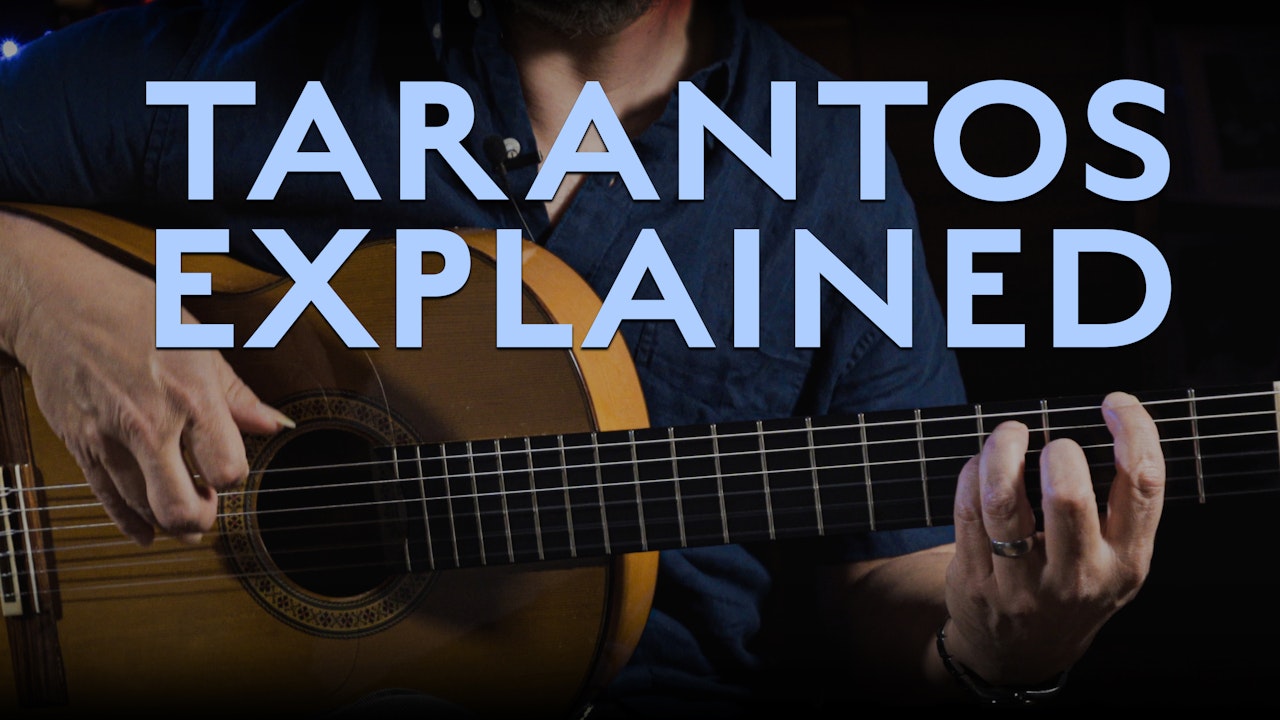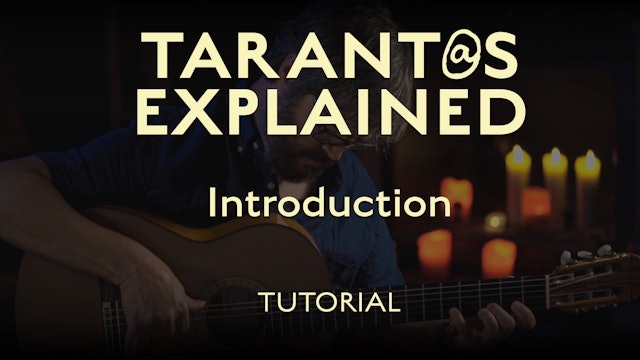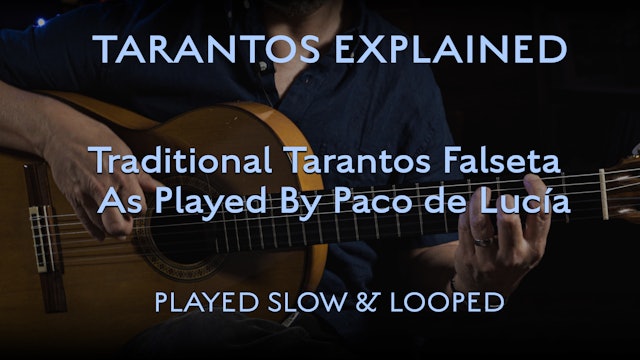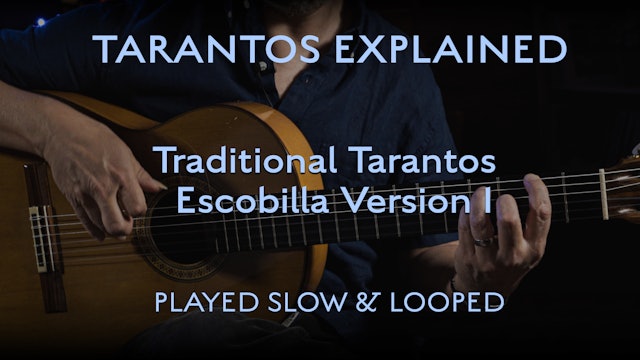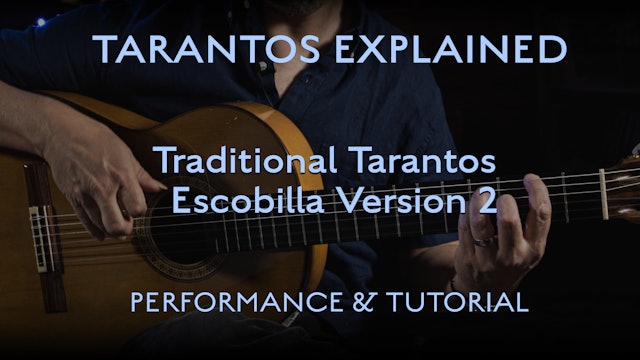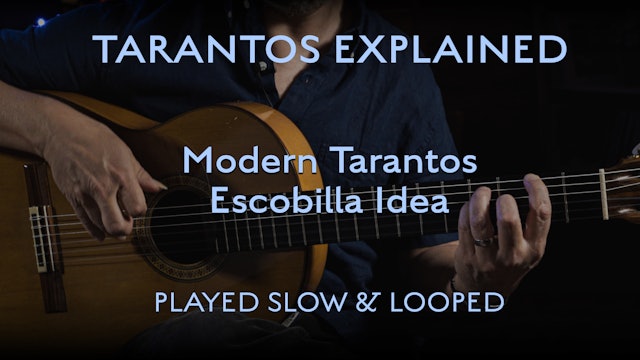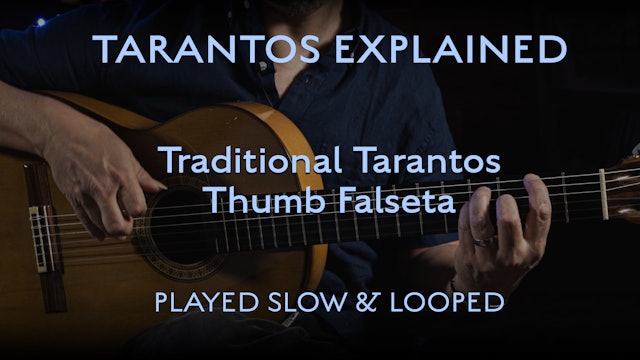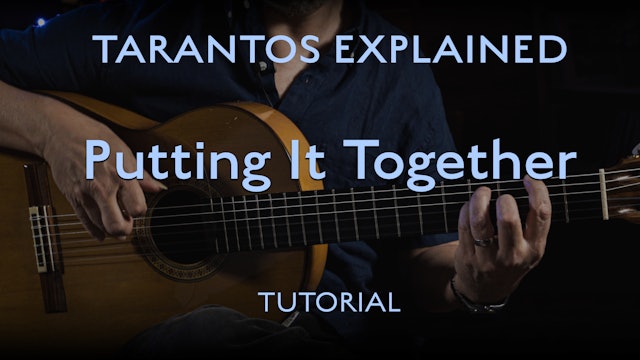Tarantos Explained
15 Episodes
Tarantos Explained is an intermediate/advanced course that explores and explains Tarantos, the in-compás cousin of Tarantas. Tarantos, like Tarantas, has one of the most distinctive sounds of any Palo in flamenco. In this course we look at getting around in the ‘key’ of F# Phrygian and then get into playing compás por Tarantos, which feels very much like playing Por Tientos. The we look at some great traditional falsetas taken from the Escobilla section of the dance and from Paco de Lucia’s “Tarantos Populares” recording of some fantastic traditional Tarantos material. Course material can be found here: https://flamencoexplained.com/tabs-and-notation/
-
Tarant@s Explained - Introduction - TUTORIAL
Episode 1
In this video we talk about what Taranta and Taranto are, what’s the difference, and what a Palo Libre is all about.
-
Tarantos Explained - Tarantos Compás- TUTORIAL
Episode 2
While Tarantas is Libre, Tarantos is in compás, so you’ll want to learn your basic patterns before getting started with the rest of the Tarantos course.
-
Tarant@s Explained - Technique & Scale - TUTORIAL
Episode 3
We look at two techniques you’ll want to become familiar with before diving in to Tarantos or Tarantos and we also take a quick look at two ways to play the F# Phrygian scale.
-
Tarant@s Explained - Voicings - TUTORIAL
Episode 4
In this video we look at some of the important chord voicings commonly used in for Taranta and Tarantos to give it that distinctive sound.
-
Tarantos Explained - Traditional Falseta as played by Paco De Lucia - Perf & Tut
Episode 5
A great and challenging falseta, again inspired by Paco de Lucia’s “Tarantos Populares,” this one features some left-hand stretches and quite a bit of Picado.
-
Tarantos Explained - Traditional Falseta as played by Paco De Lucia - Slow/Loop
Episode 6
A great and challenging falseta, again inspired by Paco de Lucia’s “Tarantos Populares,” this one features some left-hand stretches and quite a bit of Picado. This is played at 52bpm and looped several times.
-
Tarantos Explained - Traditional Escobilla Version 1 - Performance & Tutorial
Episode 7
This is one version of a very traditional Escobilla for Tarantos. As I explain in the video, there are many (sometimes weird) ways of playing this falseta for dance, but the essential melody remains the same, and you can use any variation for solo guitar.
-
Tarantos Explained - Traditional Escobilla Version 1 - Played Slow & Looped
Episode 8
This is one version of a very traditional Escobilla for Tarantos. As I explain in the video, there are many (sometimes weird) ways of playing this falseta for dance, but the essential melody remains the same, and you can use any variation for solo guitar. This is played at 52bpm and looped severa...
-
Tarantos Explained - Tarantos Escobilla Version 2 - Performance & Tutorial
Episode 9
Another traditional Escobilla falseta for Tarantos, more or less as played by Paco de Lucia on his “Tarantos Populares,” this one involves quite a bit of picado and some quick changes from picado to thumb.
-
Tarantos Explained - Tarantos Escobilla Version 2 - Played Slow & Looped
Episode 10
Another traditional Escobilla falseta for Tarantos, more or less as played by Paco de Lucia on his “Tarantos Populares,” this one involves quite a bit of picado and some quick changes from picado to thumb. This is played at 52bpm and looped several times.
-
Tarantos Explained - Modern Escobilla - Performance & Tutorial
Episode 11
A more modern approach to the Tarantos Escobilla, you can think of this chord progression and arpeggio pattern as a jumping-off point for all sorts of Tarantos Escobilla material or play it as-is.
-
Tarantos Explained - Modern Escobilla - Performed Slow & Looped
Episode 12
A more modern approach to the Tarantos Escobilla, you can think of this chord progression and arpeggio pattern as a jumping-off point for all sorts of Tarantos Escobilla material or play it as-is. This is played at 52bpm and looped several times.
-
Tarantos Explained - Thumb Falseta - Performance & Tutorial
Episode 13
Inspired by Paco de Lucia’s “Tarantos Populares” recording, this is a simple Tarantos falsetas that uses employs standard thumb technique as well as some thumb/index alternation.
-
Tarantos Explained - Thumb Falseta - Played Slow & Looped
Episode 14
Inspired by Paco de Lucia’s “Tarantos Populares” recording, this is a simple Tarantos falsetas that uses employs standard thumb technique as well as some thumb/index alternation. This is played at 52bpm and looped several times.
-
Tarantos Explained - Putting it Together - TUTORIAL
Episode 15
We wrap up the course by looking at how to put together a Tarantos guitar solo using all of your new material and adding in any other material you learn along the way.


